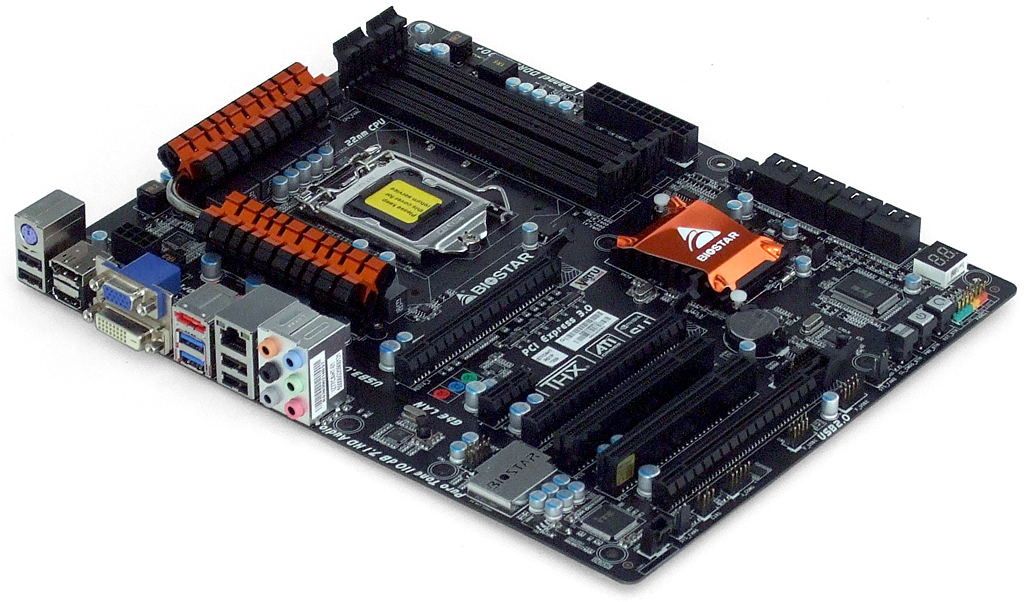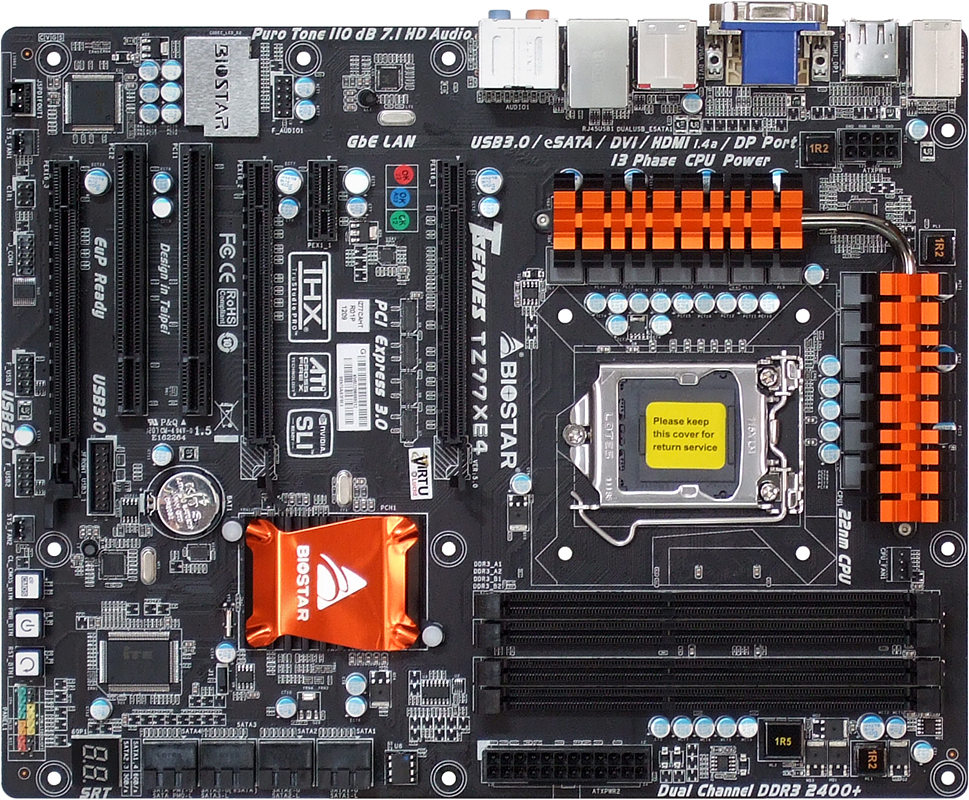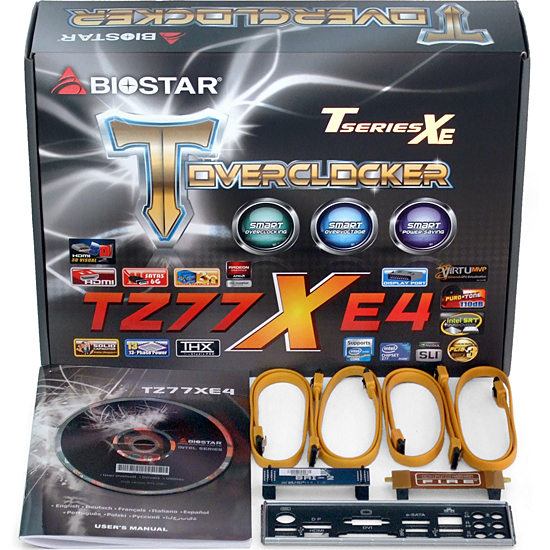Six $160-220 Z77 Motherboards, Benchmarked And Reviewed
Combining the newest features with moderate expandability, Intel’s mainstream platforms provide high value to most gaming and overclocking enthusiasts. We compare six examples with Z77 Express to find the best features, overclocking, and efficiency.
Biostar TZ77XE4
Available for around $150, we had to search for the highest-priced vendors just to keep Biostar’s entry in today’s round-up. That is to say, it's priced low enough elsewhere that it could have been included in a follow-up story on even more affordable Z77-based models. This is where Biostar wants to compete, though, confident enough that it's willing to put the TZ77XE4 up against higher-priced parts from competing companies.
The TZ77XE4 looks fairly basic by the standards of its $160 competition, relying solely upon the chipset’s four ports for USB 3.0, and sharing eSATA with one of its internal ports. Apart from a lack of additional USB 3.0 controllers, that pits Biostar directly against ASRock’s $165 model.
Both manufacturers offer internal power and reset switches. Both have Port 80 diagnostics displays. Both have replaceable firmware ROMs. And the CLR_CMOS switch on ASRock’s I/O panel CLR_CMOS is found internally on the Biostar TZ77XE4. The TZ77XE4 physically supports three-way graphics arrays more logically by placing its trio of x16-length slots at triple-slot spacing, but its third slot is still limited to four PCIe 2.0 lanes from the Z77 controller.
Biostar’s novel approach to moving its top x16 slot as high as possible is to place DIMM connectors between mounting holes so that they can be moved closer to the board’s top edge. This removes much of the conflict between graphics cards and DIMM latches, though the CPU interface is not moved northward in a similar fashion. This limits the width of most CPU coolers to around 135 mm, and off-center DIMMS could affect memory overclocking. While we couldn’t check every cooler on the market to determine which ones fit, our overclocking tests will reveal whether offset DIMMs create a problem.
Other unusual features include a front-panel audio connector above the second graphics card slot and a front-panel USB 3.0 connector above the third graphics card slot. These won't be affected by graphics coolers, but whether they block the PCIe x1 or PCI slots depends heavily on where components are located on those cards.
The TZ77XE4’s installation kit includes four SATA cables, CrossFire and SLI two-way bridges, and an I/O shield. Though it’s not stuffed with fluff, this selection of parts should be more than adequate for the needs of most builders.
Get Tom's Hardware's best news and in-depth reviews, straight to your inbox.
-
yougotjaked There's a typo on the last page. It says X77H2-A2X instead of Z77H2-A2X :P It's on the second to last paragraph...Reply -
HMSvictory I am surprised that you guys did not include the Asus z77-VReply
http://www.newegg.com/Product/Product.aspx?Item=N82E16813131820 -
confish21 One thing i was looking for was the part about asrock not having true "digital" PWM and going with an analog PWM. Does this really matter?Reply -
Crashman TekN9NeGreat review! At the end of day, it comes down to brand loyalty.I don't think the article stated anything like that. It comes down to the features you want and the cards you plan to use. In the MSI vs ASRock debate, it's x8-x4-x4 with all three slots in PCIe 3.0 mode, or x8-x8-x4 with x4 in PCIe 2.0 mode, and you're definitely wiser to pick between them based on WHAT you plan to use in the third slot.simone saysdo you mean nvidia and intel gets news during weekends not only news but featured articles?It's Monday here, and editorial has very little contact with news.HMSvictoryI am surprised that you guys did not include the Asus z77-Vhttp://www.newegg.com/Product/Prod 6813131820Tom's Hardware didn't "include" anything in the review. A couple boards were excluded based on price, and everything else was let in. The P8Z77-V Pro was the cheapest board Asus sent.rickrentswhy not with Pci-e 3.0?Editor had no PCIe 3.0 cards. And the reason he didn't get one yet is because it didn't matter. The only thing that really mattered in a single-GPU MOTHERBOARD comparison was to use the same card on all platforms.confish21One thing i was looking for was the part about asrock not having true "digital" PWM and going with an analog PWM. Does this really matter?Some digital voltage regulators have been garbage, take a look at a few of the older reviews to see this. Very few have been very good. And many more analog voltage regulators have been garbage, while many more analog voltage regulators have been very good. Quality of execution is more important than the underlying technology.Reply



